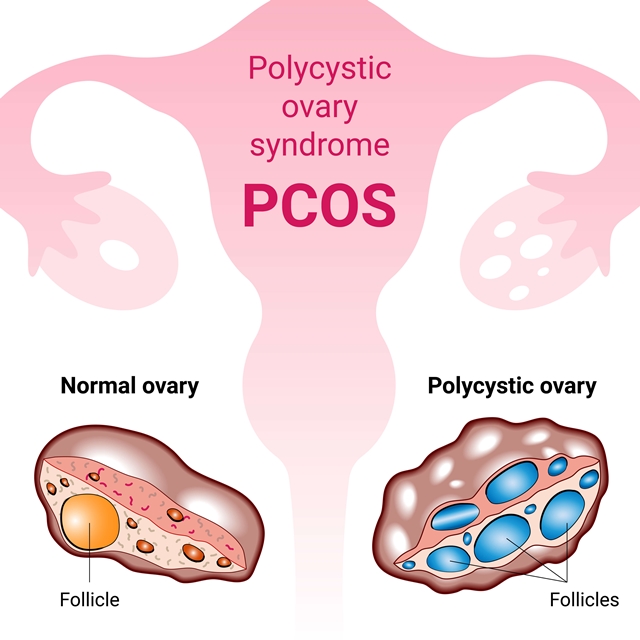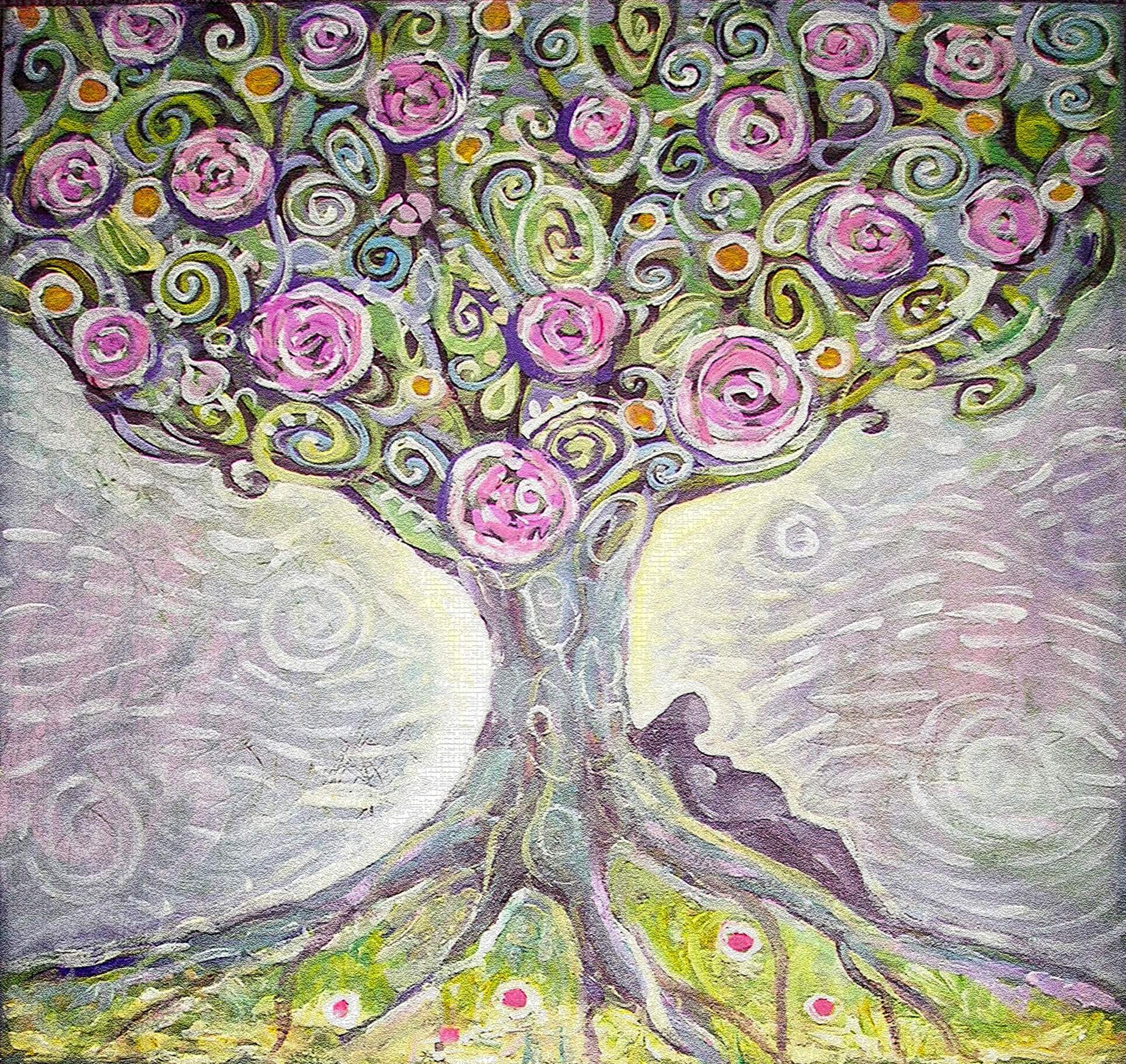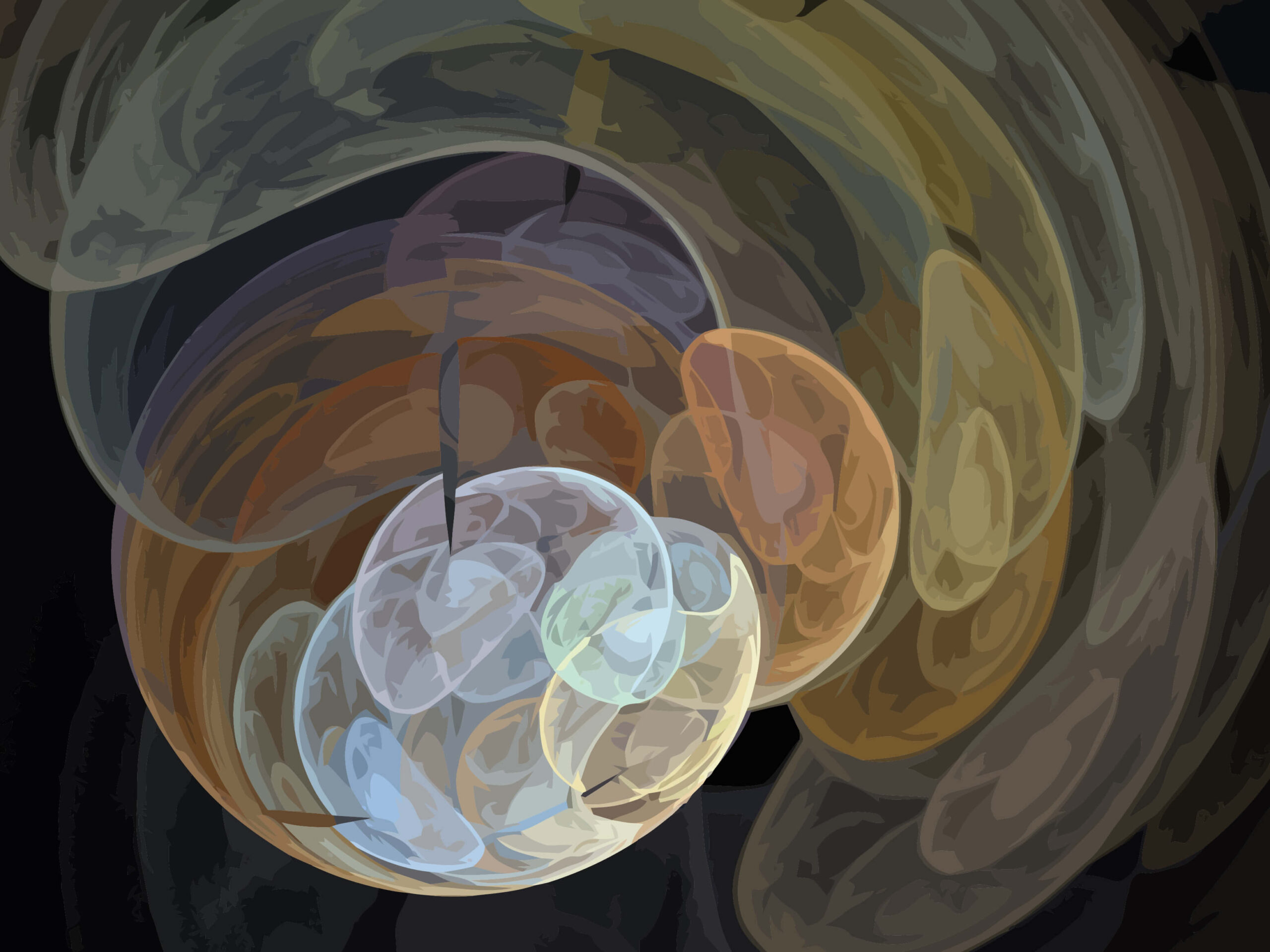WESTERN PERSPECTIVE
DESCRIPTION
Originally described by Stein and Leventhal, Polycystic ovary syndrome (PCOS) is one of the most common endocrinopathies in women of reproductive age. According to the initial description by Stein and Leventhal in 1935, the diagnosis of PCOS was based on the clinical symptoms (oligo/amenorrhoea, infertility, hirsutism, and obesity) in the presence of histologically verified polycystic ovaries. Presently, ovarian morphology can easily be identified by ultrasound, which has revealed that PCOS is not only linked to the “classic Stein-Leventhal syndrome”, but women with polycystic ovaries exhibit a wide spectrum of clinical presentations.
PCOS account for 75% of women with anovulatory infertility, 30% to 49% of secondary amenorrhea, and 85% to 90% of women with oligomenorrhea. The majority of patients with PCOS are hirsute. Obesity is also a frequent finding among women with PCOS. 30 to 60% of PCOS patients are overweight.
PCOS often comes to light during puberty due to period problems, which affect around 75% of those with the disease. Infrequent, irregular or absent periods are all common variations, many finding their periods particularly heavy when they do arrive. The period disturbance is a sign that there is a problem with regular monthly ovulation. Many teenagers use the contraceptive pill to control their periods as irregularity or heaviness is a common complaint at this time, even in the absence of PCOS. This often leads to a delay in the diagnosis of PCOS, many not presenting until the pill is stopped and finding periods cease or become irregular.
Endocrinology
Endocrinologically PCOS is also heterogenous; classically it is characterized by hyperandrogenism, inappropriate pituitary gonadotropin secretion, which causes an elevated LH to FSH ratio, and hyperinsulinism.
DIAGNOSIS
Ultrasound scan
This is usually done as an internal scan, meaning a small ultrasound probe is placed just inside the vagina, giving the best views of the ovaries and pelvic organs. In PCOS, the ovaries are found to have multiple, small cysts around the edge of the ovary. These cysts are only a few millimetres in size, do not in themselves cause problems and are partially developed eggs that were not released.
Blood tests
A couple of blood tests will assist in making the diagnosis – one to check the level of androgens, such as testosterone. Another test will measure the hormones involved in egg development – in PCOS there is a characteristic rise in lutenising hormone (LH). A progesterone blood test 7 days before the expected menstrual period can check if the woman is ovulating.
Although 60 years have passed since the first description of the syndrome, its definition and diagnostic criteria are still controversial. Several hormonal assays have been widely used to support the diagnosis, and are essential for exclusion of specific disorders which can cause polycystic ovaries. Accurate endocrine characterization of patients enables the recognition of biochemically more homogeneous subgroups of PCOS, which further provides facilities to better evaluate the pathogenesis of each of these subsets, and provide data necessary for formulating specific therapy.
CLINICAL MANIFESTATIONS
I. Obesity
II. Amenorrhoea or oligomenorrhoea
III. Infertility. Given that the period disruption with PCOS is due to irregular or absent ovulation it is not surprising that it is a common cause of infertility. It is not usually 100% absolute, and some women with PCOS will ovulate normally, some will ovulate less frequently (leading to a delay to pregnancy) and some will not ovulate at all.
IV. Hirsutism
V. Ovaries are enlarged and smooth. The tunica albuginea is thickened and beneath it are numerous small cystic follicles, varying in size but seldom exceeding .5 cm in diameter.
VI. Failure of the ovarian enzyme system which are necessary for the production of oestrogen.
VII. Reduced oestrogen
VIII. Raised testosterone
IX. Raised ratio LH:FSH
TREATMENT
Periods may be controlled by the use of the contraceptive pill, which is most suitable for women under the age of 35 who also require a good form of contraception. The other type of drug used is a progesterone-like hormone. Progesterone is the main hormone of the second half of the menstrual cycle, maintaining its length and helping reduce the heaviness. Progestagens are taken as tablets in a cyclical way, for example between days 12-26, the exact type and timing depending upon the woman’s individual cycle problem.
Some women have no periods at all, and either the contraceptive pill or cyclical progestagens are advisable to avoid the risk of endometrial cancer. Around 6 periods per year is adequate to protect against this.
CHINESE MEDICINE PERSPECTIVE
In Chinese medicine, POS may correspond to several different gynaecological diseases:
I. Scanty periods
II. Amenorrhoea
III. Infertility
IV. Flooding and Trickling (Beng Lou)
V. Irregular periods
CLINICAL MANIFESTATIONS
From a purely Chinese medicine perspective, i.e. ignoring hormonal changes and histological changes in the ovaries, the clinical manifestations are:
I. Amenorrhoea or scanty periods
II. Irregular periods
III. Hirsutism
IV. Obesity
V. Infertility
Interpretation of clinical manifestations
I. Amenorrhoea or scanty periods: deficiency of Blood of the Chong Mai; also Blood stasis within the Chong Mai. Menstrual blood is a manifestation of Tian Gui and therefore there is always a Kidney deficiency which may be Yin or Yang.
II. Hirsutism: dysfunction of the Chong Mai with imbalance between Qi and Blood. A deficiency
of Blood in the Uterus leads to amenorrhoea, but this would mean that there is more Blood available at the skin level to promote the growth of hair.
III. Obesity: Damp-Phlegm affecting both the Chong Mai and the Ren Mai.
IV. Ovarian cysts: Damp-Phlegm in the Chong and Ren.
V. Hormonal imbalance, raised testosterone: dysfunction of the Du Mai, the Yang aspect of the menstrual cycle.
VI. Hormonal imbalance, raised LH: an increase in Yang (but only relative to Yin, oestrogen) and therefore a condition of Heat in the Liver and Chong Mai.
PATTERNS
Explanation of clinical manifestations according to patterns
I. Damp-Phlegm: there is nearly always Damp-Phlegm. The ovarian cysts are due to Damp-Phlegm
II. Kidney deficiency: there is always a Kidney deficiency in POS causing the hormonal imbalance. This can be Yin or Yang, more often Yang.
III. Blood stasis: there may be Blood stasis especially if the ovarian cysts are palpable and the periods painful
IV. Liver-Fire: there may be Liver-Fire or Damp-Heat in the Liver channel.
V. Blood deficiency: there may be Blood deficiency which causes scanty periods or amenorrhoea.
DAMP-PHLEGM IN THE UTERUS
Damp-Phlegm in the uterus is the main pathogenic factor in polycystic ovary syndrome. Damp-Phlegm in the uterus manifests with the following symptomms and signs:
I. Leucorrhoea.
II. Tongue swollen with sticky coating at the root.
III. Tendency towards obesity.
IV. Fullness and heaviness of the abdomen.
V. Slippery pulse.
VI. Mid-cycle problems (slight pain, discomfort, heaviness, bleeding)
In addition, there may be some general symptoms of Phlegm such as expectoration of phlegm and
a feeling of oppression of the chest.*
Su Wen Herbs Food Supplements
Clear the Palace – to resolve Damp-Phlegm from the uterus. This supplement is a variation of the formula Qi Gong Wan which is specific to resolve Damp-Phlegm in the uterus in infertility. Although it contains one Kidney tonic (Tu Si Zi), Clear the Palace is primarily to resolve Damp-Phlegm and address infertility resulting from obstruction of the uterus by Damp-Phlegm.
PATTERNS AND TREATMENT
Rather than discuss individual patterns, I will discuss common combinations of patterns.
1. Damp-Phlegm, Kidney-Yang Xu
Clinical manifestations
Obesity, hirsutism, excessive vaginal discharge, feeling of fullness and heaviness of the abdomen, irregular periods, scanty periods, amenorrhoea, backache, dizziness, tinnitus, feeling cold, cold knees and back, tiredness, low spirits, Pale and Swollen tongue with sticky coating, Weak and slightly Slippery pulse.
Treatment principle and relevant Su Wen Herbs Food Supplements
1) Phase 2: tonify Kidney-Yang – Unicorn Pearl.
2) Phases 3 and 4: resolve Damp-Phlegm – Clear the Palace.
2) Damp-Phlegm, Kidney-Yang Xu, Bloos Statis
Clinical manifestations
Obesity, hirsutism, excessive vaginal discharge, feeling of fullness and heaviness of the abdomen, irregular periods, scanty periods, amenorrhoea, painful periods with dark-clotted blood, abdominal pain, backache, dizziness, tinnitus, feeling cold, cold knees and back, tiredness, low spirits, Pale, Bluish-Purple and Swollen tongue with sticky coating, Weak and slightly Slippery or Firm pulse.
Treatment principle and relevant Su Wen Herbs Food Supplements
2) Phase 1: invigorate Blood – Stir Field of Elixir (Invigorate Blood and Stem the Flow if the period is heavy)
3) Phase 2: tonify Kidney-Yang – Unicorn Pearl.
4) Phases 3 and 4: resolve Damp-Phlegm – Clear the Palace.
3) Damp-Phlegm, Kidney-Yin Xu, Blood Statis
Clinical manifestations
Obesity, hirsutism, excessive vaginal discharge, feeling of fullness and heaviness of the abdomen, irregular periods, scanty periods, amenorrhoea, painful periods with dark-clotted blood, abdominal pain, backache, dizziness, tinnitus, night-sweating, feeling of heat in the evening, tiredness, low spirits, Swollen tongue with sticky-rootless coating or without coating, slightly Purple on the sides, Weak and slightly Slippery or Firm pulse.
Treatment principle and relevant Su Wen Herbs Food Supplements
3) Phase 1: invigorate Blood – Stir Field of Elixir (Invigorate Blood and Stem the Flow if the period is heavy)
4) Phase 2: nourish Kidney-Yin – Growing Jade.
5) Phases 3 and 4: resolve Damp-Phlegm – Clear the Palace.
4) Damp-Phlegm, Damp-Heat, Kidney-Yang Xu
Clinical manifestations
Feeling of fullness and heaviness of the abdomen, excessive vaginal discharge, acne, hirsutism, feeling of heat, dark urine, scanty periods, amenorrhoea, mid-cycle bleeding and/or pain, backache, dizziness, tinnitus, feeling cold, cold knees and back, tiredness, low spirits, Pale and Swollen tongue with sticky yellow coating on the root, Weak and slightly Slippery pulse.
Treatment principle and relevant Su Wen Herbs Food Supplements
3) Phase 2: tonify Kidney-Yang – Unicorn Pearl.
4) Phase 3: resolve Dampness, clear Heat – Drain the Jade Valley.
5) Phase 4: resolve Damp-Phlegm – Clear the Palace.
EXTRAORDINARY VESSELS TREATMENT
Ren Mai: LU-7 Lieque (on the right) and KI-6 Zhaohai (left), Ren-4 Guanyuan, ST-28 Shuidao,
Zigong.
Chong Mai: SP-4 Gongsun (right) and P-6 Neiguan (left), KI-14 Siman, SP-10 Xuehai, LIV- 3
Taichong.
Du Mai: SI-3 Houxi (right) and BL-62 Shenmai (left), Ren-4 Guanyuan, Du-3 (Yaoyangguan).
Du Mai and Ren Mai: SI-3 Houxi (right), BL-62 Shenmai (left), LU-7 Lieque (left), KI-6 Zhaohai (right), Ren-4 Guanyuan, Du-20 Baihui, Du-3 Yaoyangguan. Journal of Chinese Medicine, no. 51, Cao Wen Zhong and Xu Hui Qing “Some Difficult Cases Treated by Acupuncture”, p. 9.
LU-7 Lieque (to activate Ren Mai)
BL-32 Ciliao to invigorate Blood
ST-25 Tianshu to move Qi and invigorate Blood
Du-1 Changqiang to invigorate Blood
ST-40 Fenglong to resolve Phlegm and Dampness
SP-6 Sanyinjiao “for a moderating effect to avoid injury to Qi”
L.I.-4 Hegu and LIV-3 Taichong to tonify and regulate Qi and Blood and to balance Yin and Yang
BL-31 Shangliao, BL-32 Ciliao, BL-33 Zhongliao, BL-34 Xialiao every 3rd treatment with Fire needle.
Journal of Chinese Acupuncture Zhong Guo Zhen Jiu, no. 4, 1999, p. 199. -Ovarian failure: Ren-4
Guanyuan, Ren-3 Zhongji, KI-12 Dahe, BL-23 Shenshu.
Journal of Chinese Acupuncture Zhong Guo Zhen Jiu, no. 7, 2000, p. 399.
-Ovarian failure by treating the Du Mai: Du-14 Dazhui, Du-13 Taodao, Du-12 Shenzhu, Du- 10
Lingtai, Du-9 Zhiyang, KI-1 Yongquan. (Explanation: Du Mai, together with Chong and Ren Mai,
connects with the Heart and Kidneys).
Journal of Chinese Acupuncture Zhong Guo Zhen Jiu, no. 12, 1999, p. 727.
-Ovarian failure treated with moxibustion: Ren-4 Guanuan, Zigong, SP-6 Sanyinjiao.
Su Wen Herbs are food supplements, to be taken as directed by a qualified practitioner. They are not intended to treat, cure, diagnose or prevent any disease. Not to replace a varied diet. Not to be taken if nursing or if pregnant. Not to be consumed continuously for longer than 3 months.
Check out all the courses by Giovanni Maciocia
Giovanni Maciocia (1945 – 2018) was a highly respected author, lecturer and practitioner of Chinese medicine. He trained in England at the International College of Oriental Medicine graduating in acupuncture in 1974 after a three-year course. He went on to study Western herbalism and graduated from the National Institute of Medical Herbalists in 1977. He attended three postgraduate courses in acupuncture (1980, 1982, 1987) at the Nanjing University of Traditional Chinese Medicine, one of the foremost teaching institutions in China, where he was later appointed Visiting Professor in 1996. There he gained invaluable knowledge and clinical experience helped by his ability to read Chinese which gave him access to Chinese medicine textbooks, old and modern.











